Shandong has three must-sees, one mountain - Mount Tai in Tai’an, one spring - Baotu Spring in Jinan and one sage - Confucius in Qufu. After your natural sightseeing trip, Qufu is the ideal destination to explore Confucian culture, one of the most famous and influential philosophy system and traditional culture in China.
Qufu is a county-level city in northern Jining, southwest of Shandong Province, about 150 km from Jinan and 400 km from Qingdao. The city is best known as “the Hometown of Confucius” and thus honored as the holy “Oriental Jerusalem”. And, it is respected as an important cradle of Chinese civilization, for being the birthplace of Emperor Yellow, ancient capital during Emperor Yan period, ancient city of Yin Dynasty and Lu State of Zhou Dynasty. The city owns the San Kong (three Confucius sites), the top cultural highlight, legacy and Confucian embodiment that have been listed as UNESCO World Cultural Heritage since 1994.
The UNESCO World Cultural Heritage - San Kong consisting of the Temple, Cemetery and Family Mansion of Confucius is the top place to visit in Qufu. Besides, there are many other cultural and natural spots you can visit to get in-depth understanding of the influential Confucian culture and brilliant charm of Qufu. Find more Qufu Attractions >>
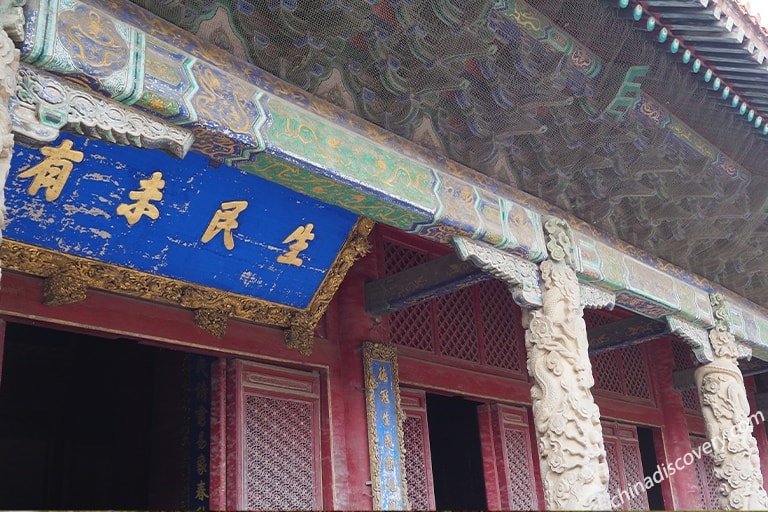
The temple, built in 478 BC on Confucius’s former residence, is one of the great ancient architecture complexes and the biggest mode of Confucius sacrificial temples in China. The temple is well-designed based on feudal ritual, keeping numerous cultural relics, including imposing hall, over 1,000 steles and many old trees.
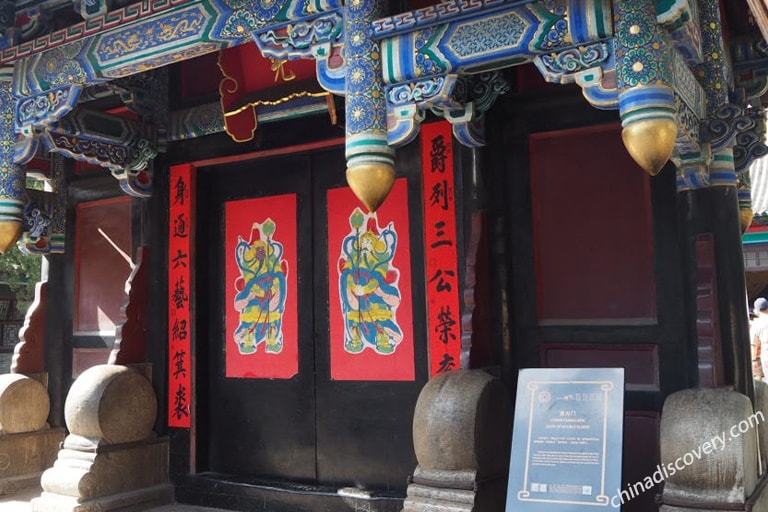
Located in east of Confucius Temple, Kong Fu is a large-scale 650-year-old notable house of Confucius’s direct offspring. It covers 9 courtyards, 463 rooms for government affairs and family dwelling. The mansion itself and various cultural relics collected inside are both valuable.
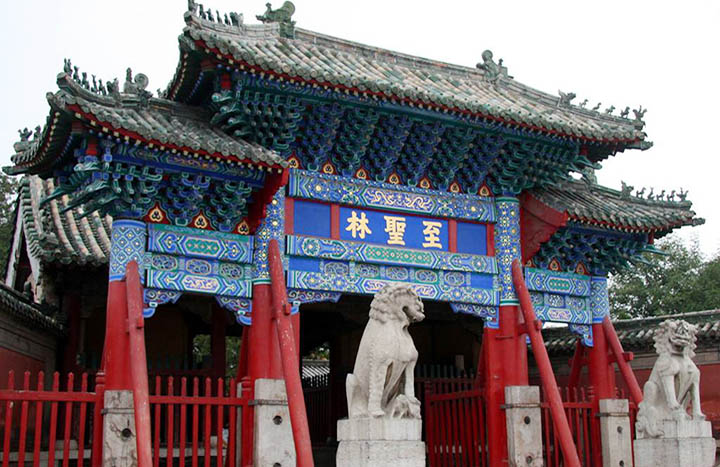
The cemetery, also called Confucius Forest, is the mausoleum of Confucius and his descendants. Covering a total area of 2 million square meters, it reserves more than 100,000 tombs. Lots of ancient steles, archways and burial relics help visitors better understand ancient funeral system & ancient art, customs and calligraphy.
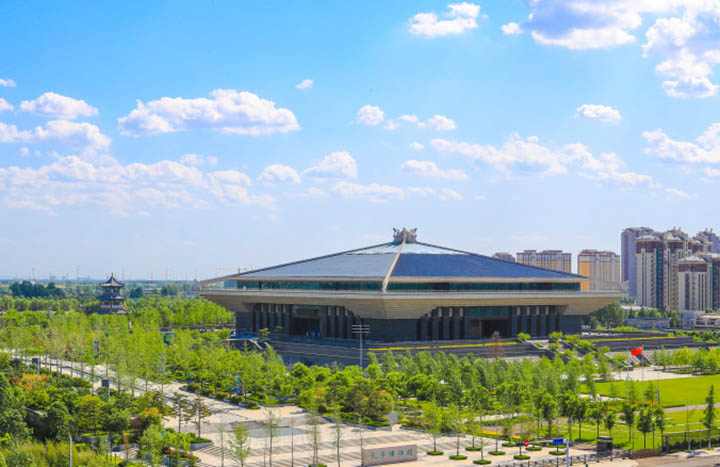
The museum is a newly-built museum especially for commemorating Confucius and presenting and dissimilating his Confucianism. Nearly 700,000 pieces of cultural relics are exhibited to show the era & entire life of Confucius lived, his great wisdom & profound impact on the civilization of China and world.
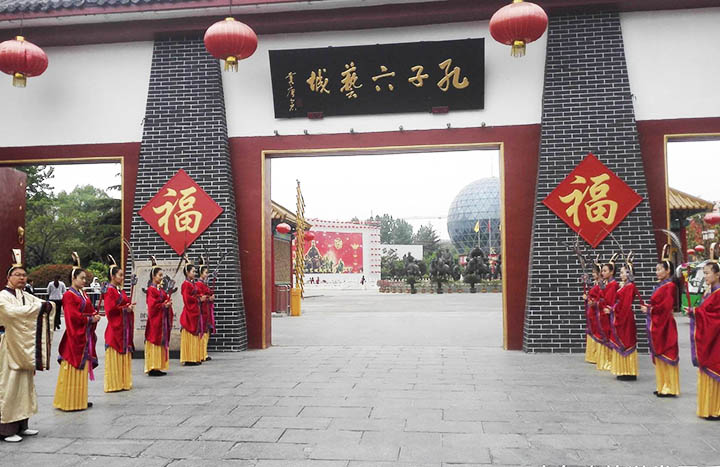
This spot is a big cultural themed tourist city offering modern ways to learn ancient Six Arts. Here you can experience lessons of rites, music, calligraphy, mathematics by yourself as ancient students, and have meals, accommodate, shop and enjoy many entertainments.
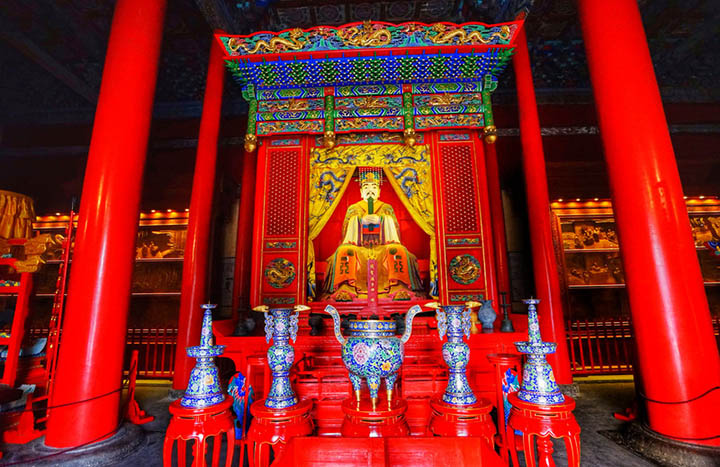
Yan Temple is an ancient temple constructed for Yan Hui, the most disciple of Confucius. With a long history of 680 years, dozens of ancient architecture, inscriptions and hundreds of ancient trees, the temple has been registered on China’s the UNESCO World Cultural Heritage Tentative List.
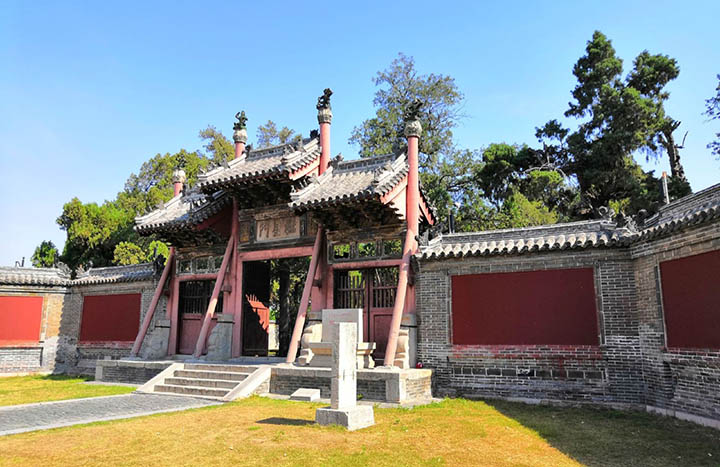
Zhougong Temple is dedicated to Duke Wen of Zhou Dynasty, a royal family member and an outstanding Confucian pioneer who wrote the Rites of Zhou and some Confician classics. The temple retains lots of Ming & Qing Dynasty buildings, archways, steles and less-tourist quietness.
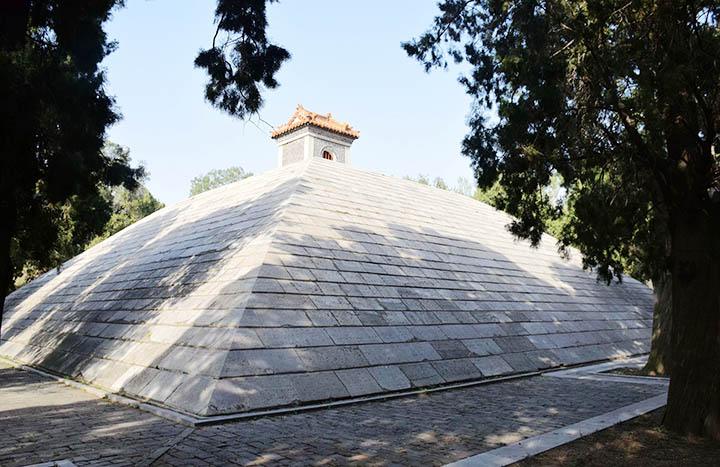
Famed as “Oriental Pyramid” for its shape, this tomb is the mausoleum of Emperor Shao Hao, one of the great five emperors in Chinese mythology. Now, the area stores 17 ancient buildings, 22 stone tablets and nearly 400 ancient trees.
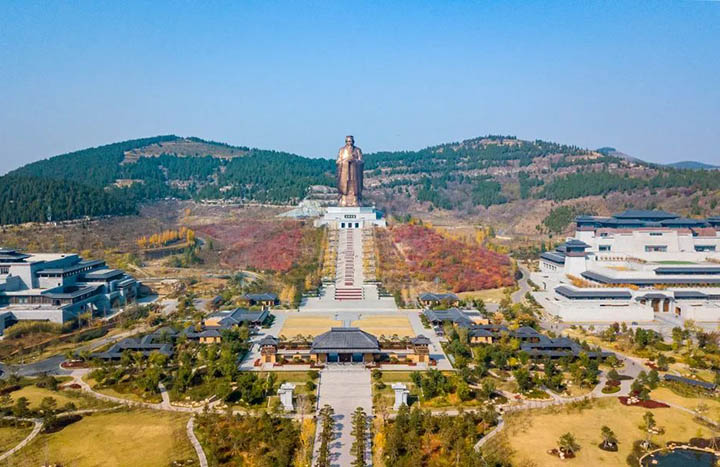
Ni Mountain or Mount Ni is a national forest park in east suburb of Qufu. Its elevation n is not high, but is widely honored as the birthplace of Confucius. You can take an easy hike to see the giant statue of Confucius and visit the exact birth site of this great philosopher.
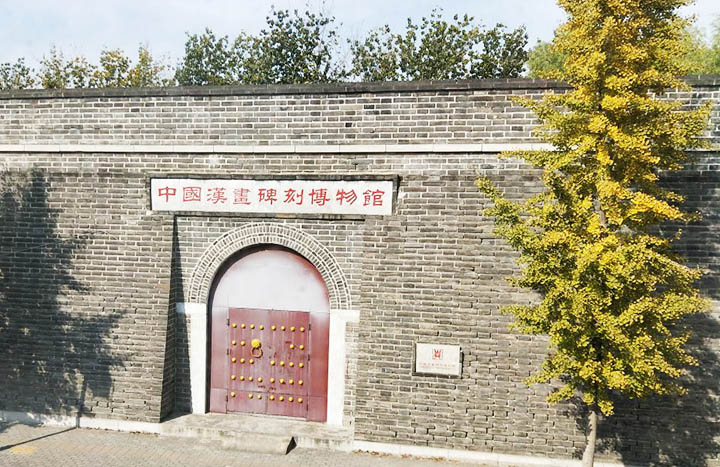
This is a small private museum displaying thousands of rare rubbings of Han Dynasty inscriptions, stone paintings and carvings. Extra entrance is needed. Chinese culture fans can learn some excellent Chinese characters here.
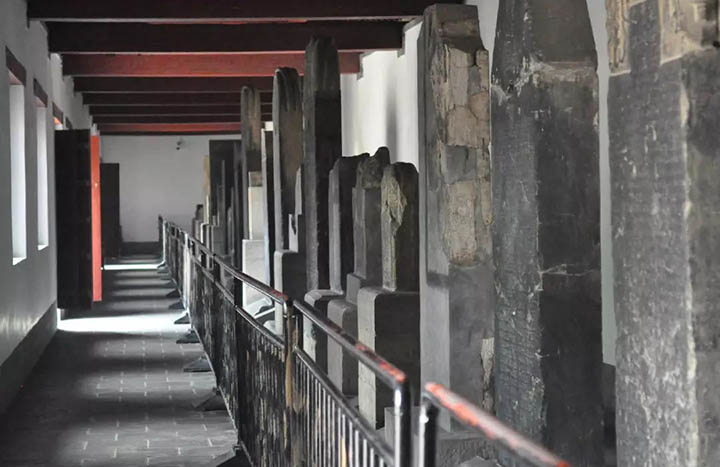
Less-known to regular tourists, this site is a truly cultural gem, collecting some of the best ancient steles in China. Inside the small gallery, you can see old Chinese characters, superb examples of Chinese calligraphy works.
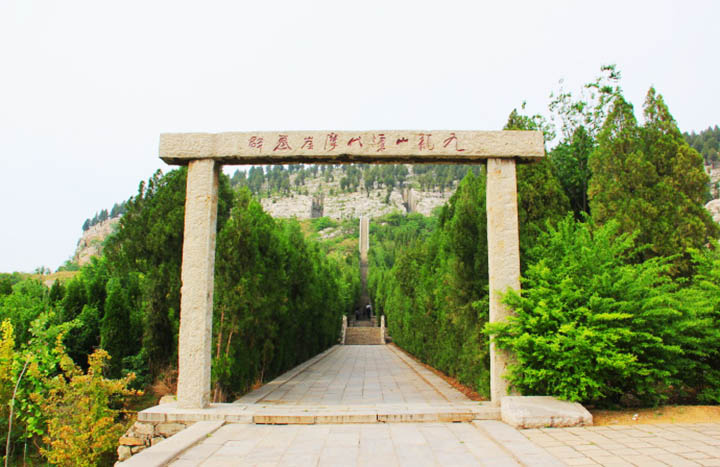
The tomb situated on the Nine Dragon Mountain is a Han Dynasty burial site of ten dukes. Except discovered chariots, horses and decorations, the tombs were designed with complete drainage system, providing useful information to learn Han Dynasty burial culture.
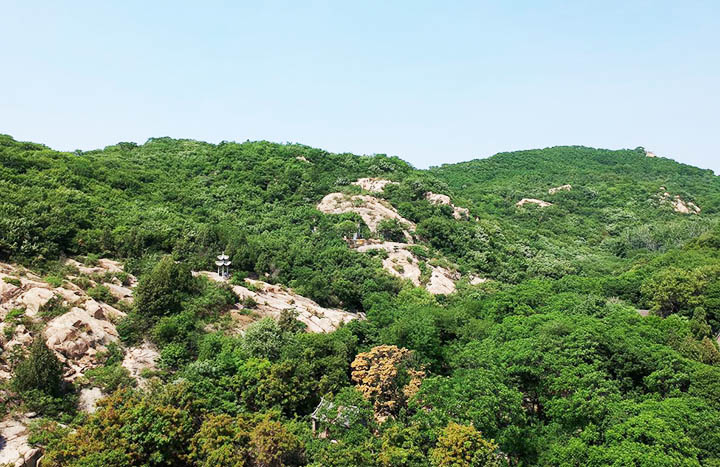
Named after the vivid stone gates forming by the peaks, Shimen Mountain in the north suburb of Qufu is a national forest park integrated with natural and cultural landscape. The highlights are the green mountain, exotic stones, refreshing air and legend of Confucius and Li Bai, Du Fu adds more humanistic connotations.
Traveling to Qufu will never be boring. It’s quite knowledgeable and meaningful when you catch a glimpse of Confucius’ life and his great philosophy. It’s also very interesting when you try and watch different local activities. With careful listen, sightseeing and learn, educators, parents and fans of Confucian culture and Chinese culture can be rewarded insight to developing good personal characters in the family, work and social life. More about Top Things to Do in Qufu >>
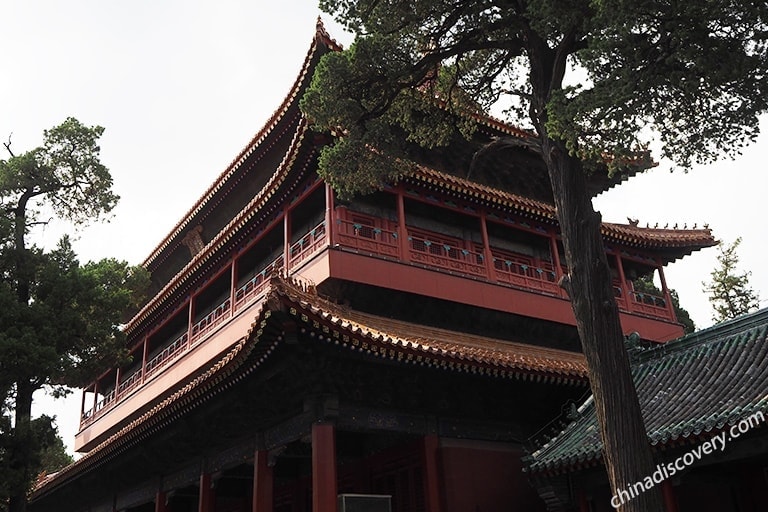
The top thing to do in Qufu is to make a pilgrimage to the San Kong, honor Confucius’s great Confucianism and its influence to his afterworld. These sites are divine Confucian legacies and priceless architecture treasures, exhibiting the residence, family mansion and cemetery of Confucius and his descendants via massive exquisite culture relics.
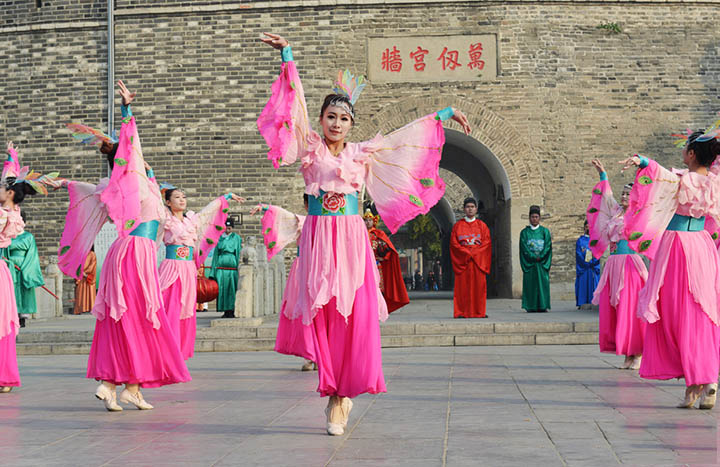
Outside the Temple of Confucius, there are free “Opening & Closing of City Gate” shows at 8:00 AM and 5:00 PM each day. People dressed in ancient costumes like ancient warriors and maidservants will perform dances and shows for entertaining. Confucius Six Arts City also offers two dance shows every day.

In Confucianism, the Six Arts, including rites, music, archery, chariotry, calligraphy and mathematics are the six basic skills to be a perfect gentleman. You can experience all these arts in Confucius Six Arts City and learn Chinese traditional courses for different talents.

It’s a good idea to take several hours to suburb Qufu, hike the mountains to breath fresh air and stretch your legs. Ni Mountain and Shimen Mountain are both wonderful national forest parks, where you can have a leisurely hike, enjoy wild nature of lush forests, peaceful waters and wide visions.
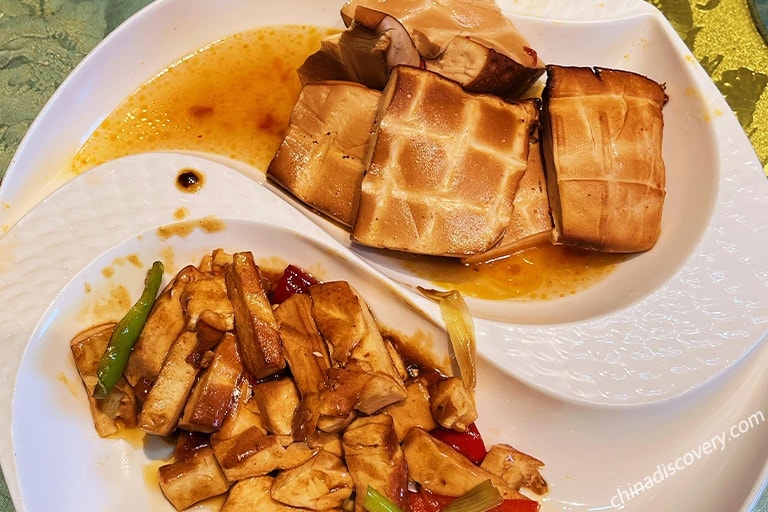
Deeply affected by local products and the Confucian culture, Qufu has a mixture cuisine culture of delicate aristocratic banquet and simple civilian diet. Kongfu Banquet is the most famous feast that usually made to treat important guests, celebrate wedding, birthday and big days. Other typical dishes have Kongfu Pancake, Smoked Bean Curd…
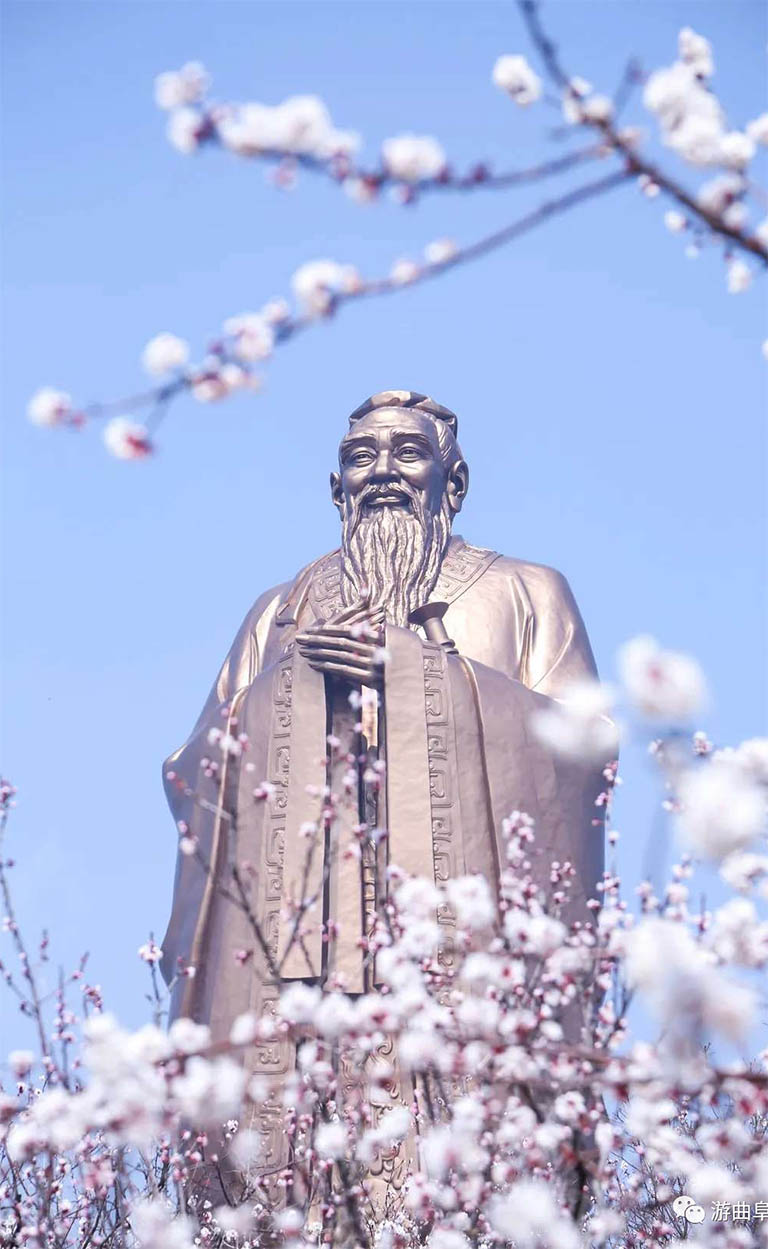
Qufu belongs to a Warm Temperate Monsoon Continental Climate, main featuring four distinct seasons, rich rainfall, hot & rainy summer and dry and cold winter. The annual average temperature of Qufu is about 13.6℃ and yearly average precipitation is around 701.0mm, annual sunshine hours is 2,341.3 hours. Since spring begins, Qufu becomes warmer gradually. The average low and high temperature in March is 6℃ and 17℃, later it increases to 17℃ and 28℃ in May. June to August is the hot summer season of Qufu, when the average low temperature remains above 20℃ and high temperature is between 31℃~34℃. July is the hottest month with the largest amount of rainfall throughout the year.
From September to November, temperature in Qufu decreases to a cool level. In the autumn, there has more clear days and the International Confucius Cultural Festival will be held during this period too. December to February is the cold winter, where average low temperature drops to -1℃ and high temperature keeps just a few degree centigrade. January is the coldest month but seldom snows.
Generally, Qufu is suitable for a tour at any time of a year. The best travel time is from March to November, for you can experience moderate temperature; enjoy travel convenience and gorgeous green trees and beautiful flowers in spring and summer and great chance to witness the grand Confucius ceremony held in autumn.
See more details about Qufu Weather, Temperature & Climate >>
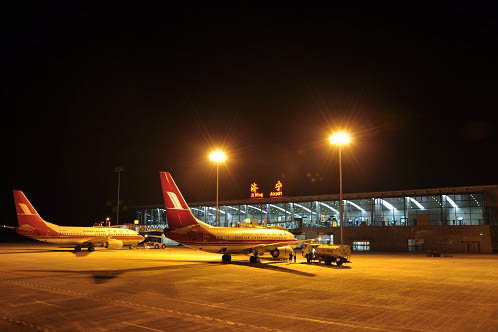
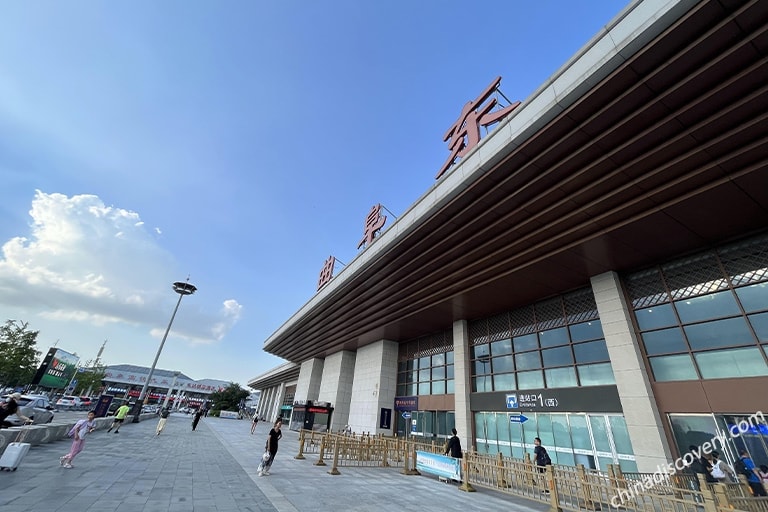
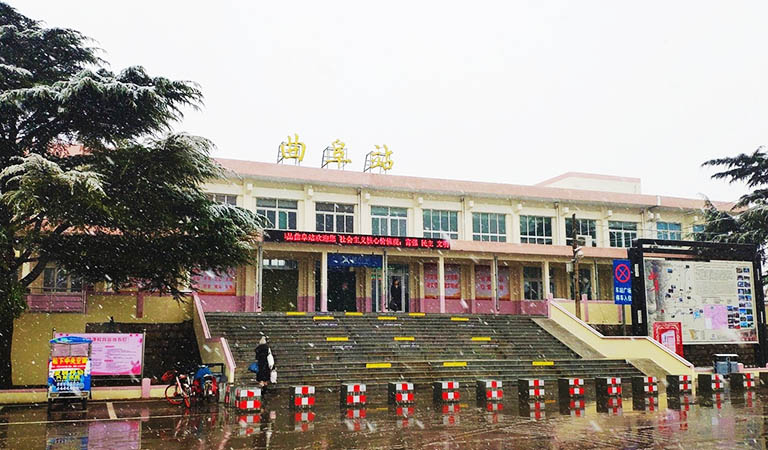
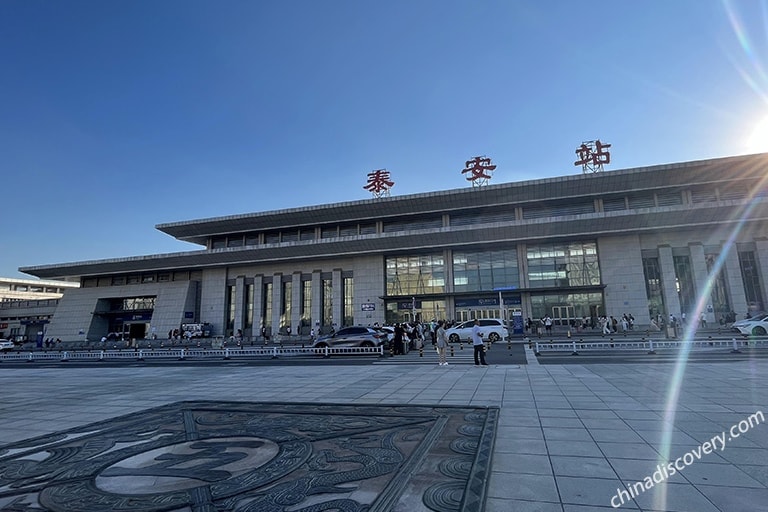
By Flight: The nearest airport, Jining Qufu Airport (IATA: JNG), is about 85 km from Qufu. Currently, the airport flies 18 domestic air routes between Qufu and over 20 Chinese cities. So, tourists in tight schedules or prefer air travel than land transportation can directly fly to Jining Qufu Airport from Beijing (about 30 minutes), Shanghai (about 1 hour), Guangzhou & Chengdu (about 2.5 hours), Qingdao & Yantai, Dalian (about 1.5 hours), Chongqing, Kunming, Guiyang, etc. Most are limited flight scheduled daily. After landing, you need another 1.5 hours for transferring from the airport to Qufu.
By Train: Thanks to the north-south Beijing-Shanghai High Speed Railway, east-west Rizhao-Qufu High Speed Railway, and two normal rail lines, Qufu is well-linked with Beijing, neighboring provinces of Shandong and major destinations in Shandong. Qufu has two train stations; one is Qufu East Railway Station running all high speed trains to/off Qufu and Qufu Railway Stations handling a few normal regional trains within Shandong. Compared to an air travel with extra transfer, getting to Qufu by high speed train is more recommended and popular among all tourists, because it only takes 2.5 hours from Beijing, 3~4 hours from Shanghai, 30~40 minutes from Jinan, 2.5~3.5 hours from Qingdao, just 20 minutes from Tai’an, 2.5 hours from Weifang, etc. After arrival, you still have to take a 20 minutes’ drive to Qufu from Qufu East Railway Station.
>> Qufu Railway Stations: Location & Transportation
>> How to Get to Qufu / Beijing to Qufu High Speed Trains
>> Get from Jinan to Qufu / Tai'an to Qufu High Speed Trains
Well-developed railway network of Shandong gives great convenience of traveling around Qufu. Every day, there are frequent high speed trains departing from Qufu East Railway Station to Jinan, Tai’an, Qingdao, Weifang, Yantai, Weihai and other cities of Shandong, taking only tens of minutes to a couple of hours.
If you travel from Qufu to Mount Tai and Jinnan, the most time-saving and convenient way is to travel with China Discovery, enjoy our private transfer by a licensed, clean, safe and comfortabe vehicle.
>> Qufu to Tai'an / Qufu to Qingdao / Qufu to Jinan
>> Qufu to Weifang / Qufu to Yantai / Qufu to Weihai
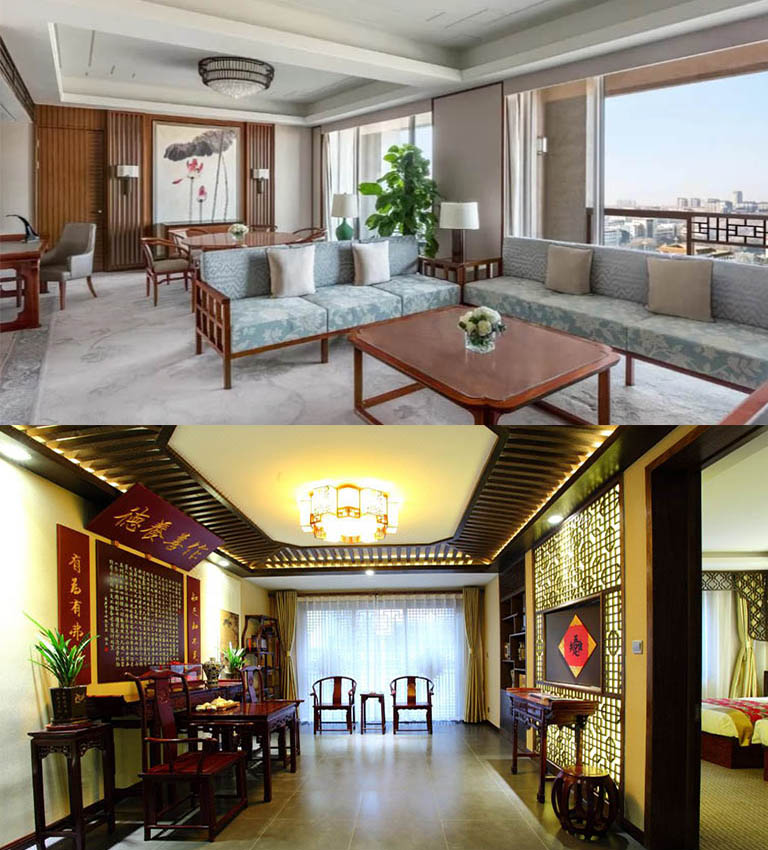
As a small county-level city in Jinan, southwest of Shandong, the overall accommodation condition and choice may not be as good as in Beijing, Shanghai and other metropolises you’ve visited. However, being a famous cultural destination in Shandong, Qufu still offers some luxury 5-star hotels with finest facilities and services, and lots of excellent 4-star hotels, nice Confucian themed hotels and budget hostels. Downtown area is the best place to stay during your Qufu trip, because it’s perfectly located close to the San Kong (Temple & Cemetery of Confucius and Kong Family Mansion) and has the best hotels and shopping, dining choices. Some hotels are even situated inside the scenic area, so you can easily walk to the spots. Top recommended Qufu hotels in the city center include Shangri-La Hotel, Qufu, JW Marriott Hotel Qufu, Fuzi Binshe Culture Boutique Hotel, Queli Hotel, Inzone Garland Hotel…
Where is Qufu located? What are the top recommended places to visit? Here we made many different travel maps of Qufu to help you better know its location and major attractions and plan a Qufu tour efficiently. Qufu Maps 2023 offers more updated and downloadable maps for your reference.
Shandong, a coastal province in East China, offers both charming seaside landscape and rich cultural and historical heritages. Except sacred Confucian birthplace of Qufu, there are much more great destinations in Shandong worth your exploration, including beautiful Qingdao, holy Mount Tai, scenic “City of Springs” - Jinan, Weifang, and fairyland-like Penglai in Yantai, etc. The following are top recommended Shandong destinations to travel with Jinan.
China is vast and diverse. You can choose your favorite destinations among more than 70 tourist destination and regions, like Beijing, Shanghai, Xian, Chengdu, etc. Following are 4 popular destinations you may get interested in. Check all destinations in China.
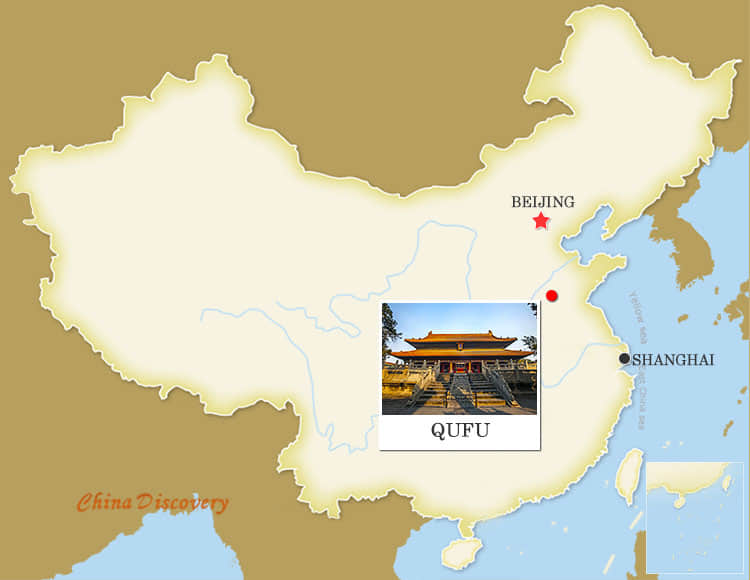
Chinese Name: 曲阜
Chinese Pinyin: qū fù
English IPA: /'tʃu:ˈfu/
Area: 815 Square Kilometers
Population: 649,900
Language: Qufu Dialect, Mandarin
Tel Code: 0537
Zip Code: 273100
Time Zone: (UTC+8)
City Three: Juniperus Chinensis
City Flower: Orchid
Making a day trip to Qufu is the most popular itinerary, which is often planned with a day tour of Mount Tai hiking. In Qufu, Temple & Cemetery of Confucius and Kong Family Mansion are the three must-see attractions for your Confucian cultural pilgrimage journey. And then, you can attend Enlightenment Ceremony to experience ancient student ceremony for before going to school. Next, you can transfer from Qufu to Mount Tai, use 1 day to marvel at the stunning nature and imperial hiking traces.
Shandong is a beautiful coastal province with long history and brilliant culture. You may spend 1 day visiting scenic Jinan with hundreds of underground springs or longer time on discovering other wonderful destinations together, like refreshing Qingdao with energetic beer culture, interesting Capital City of Kite – Weifang, gorgeous seaside scenery of Yantai and Weihai, etc. Just within 1 week, you can tour best highlights of Shandong before continuing your China tour to Beijing and nearby regions in North China. You may contact us to customize your Shandong Qufu tour on private requirements!
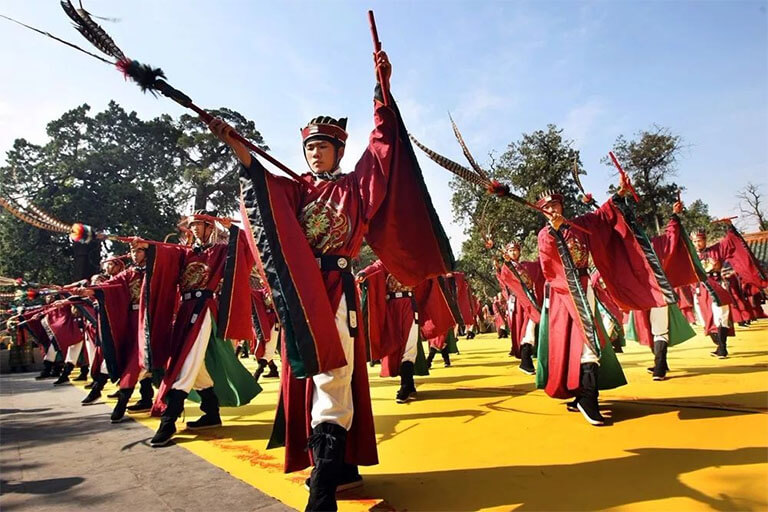
Qufu / Mount Tai
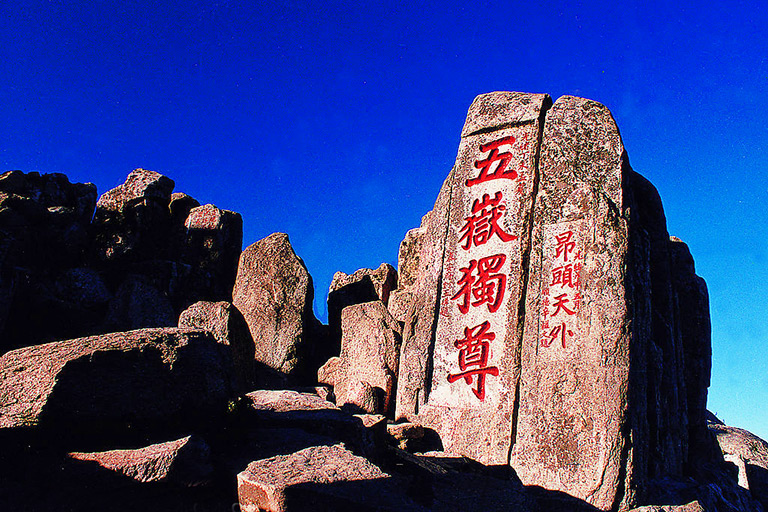
Jinan / Mount Tai / Qufu
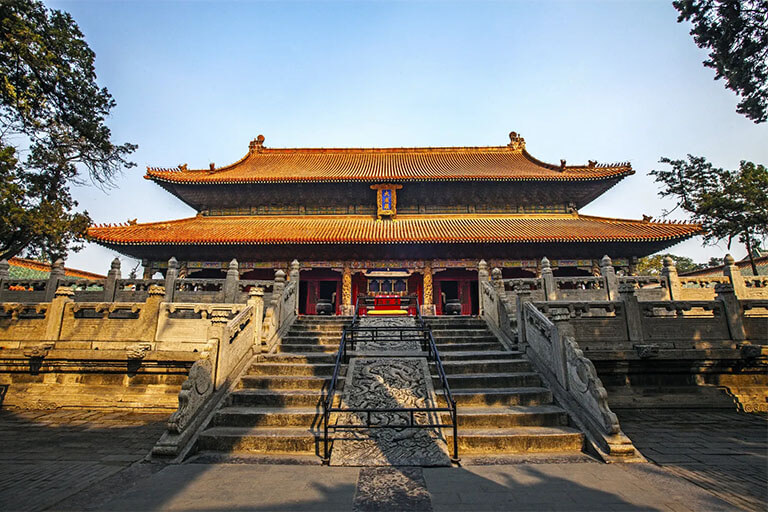
Beijing / Mount Tai / Qufu

Jinan / Mount Tai / Qufu / Qingdao
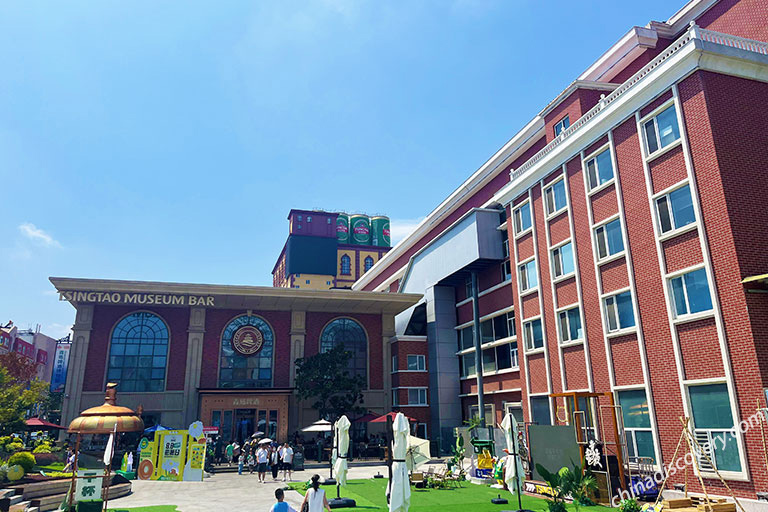
Qingdao / Qufu / Mount Tai
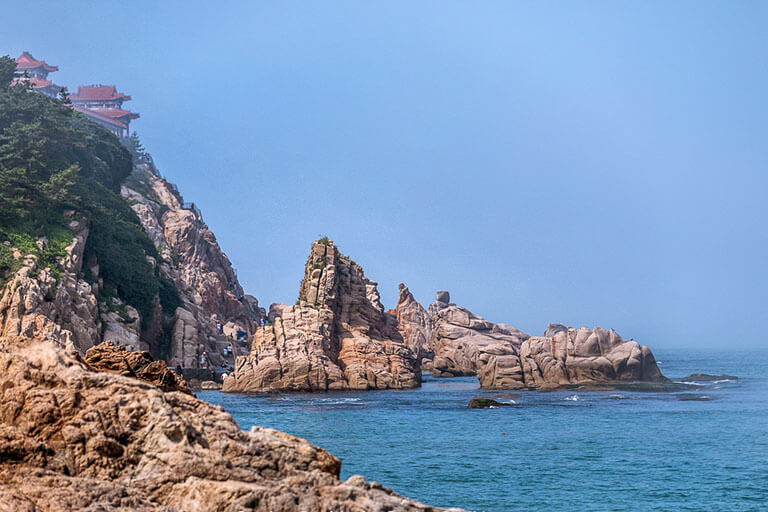
Qingdao / Weihai / Yantai / Weifang / Zibo / Qufu / Mount Tai / Jinan
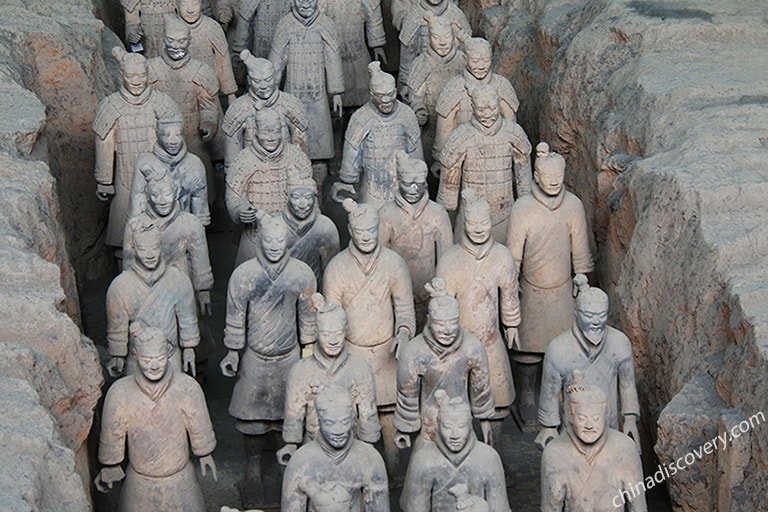
Beijing / Mount Tai / Qufu / Zhengzhou / Shaolin Temple / Luoyang / Xian
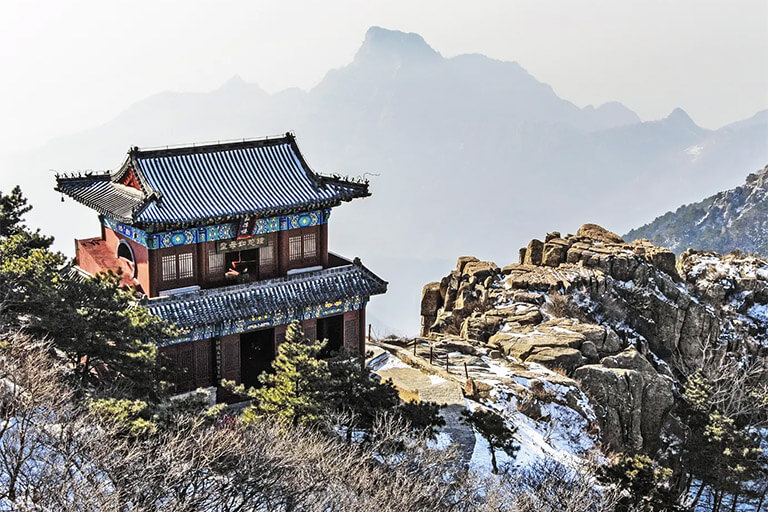
Beijing / Mount Tai / Qufu / Shanghai